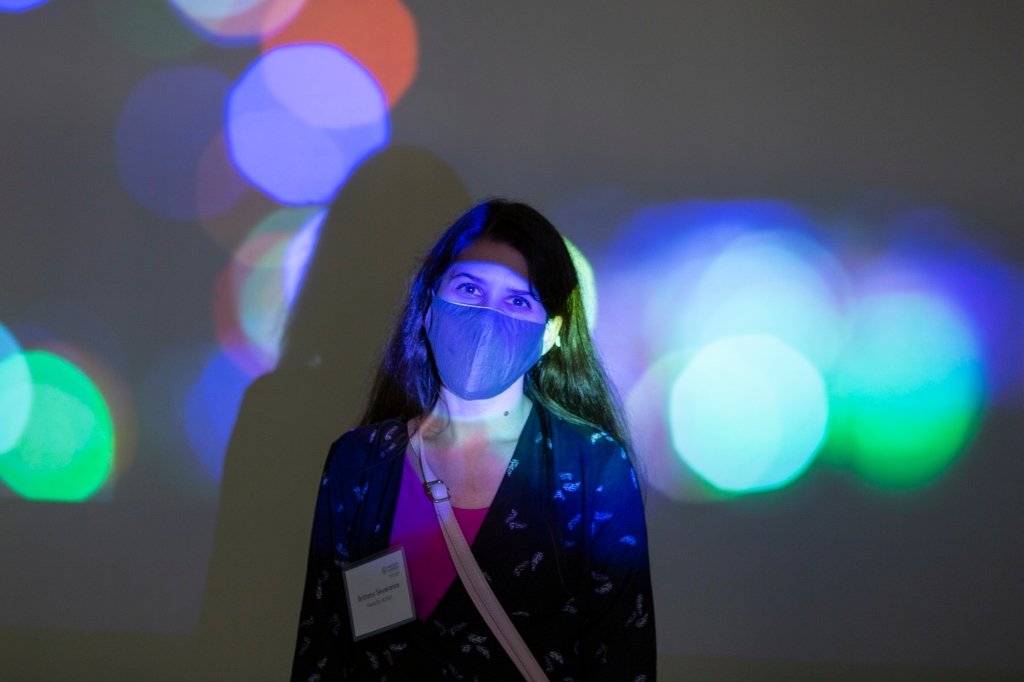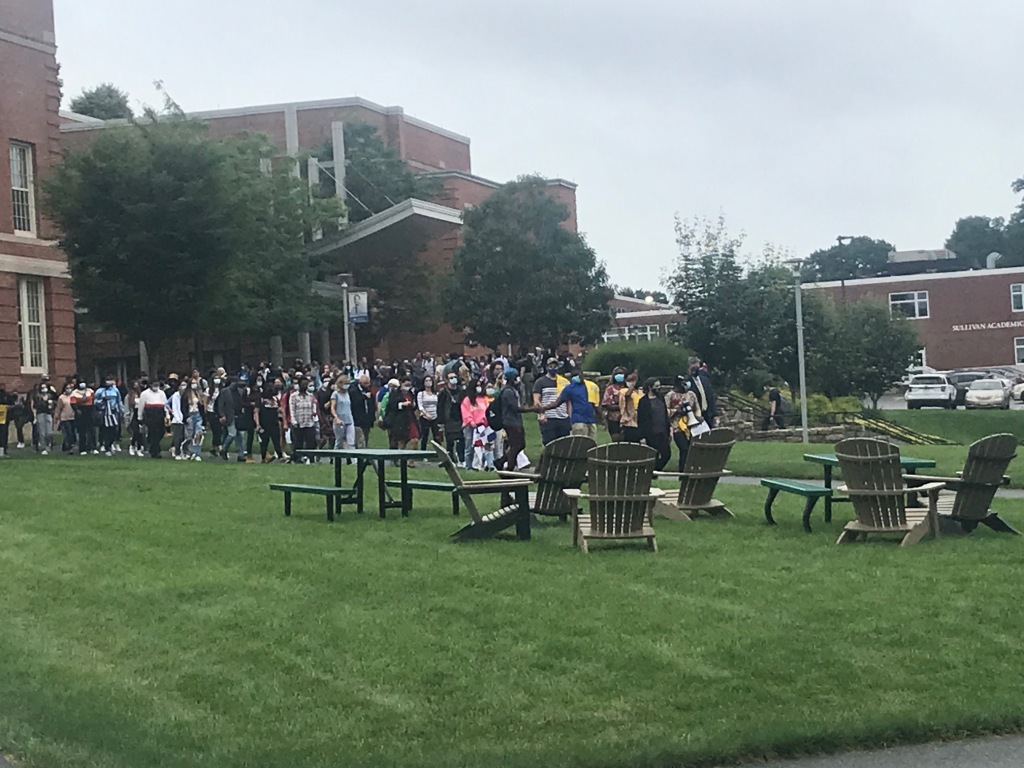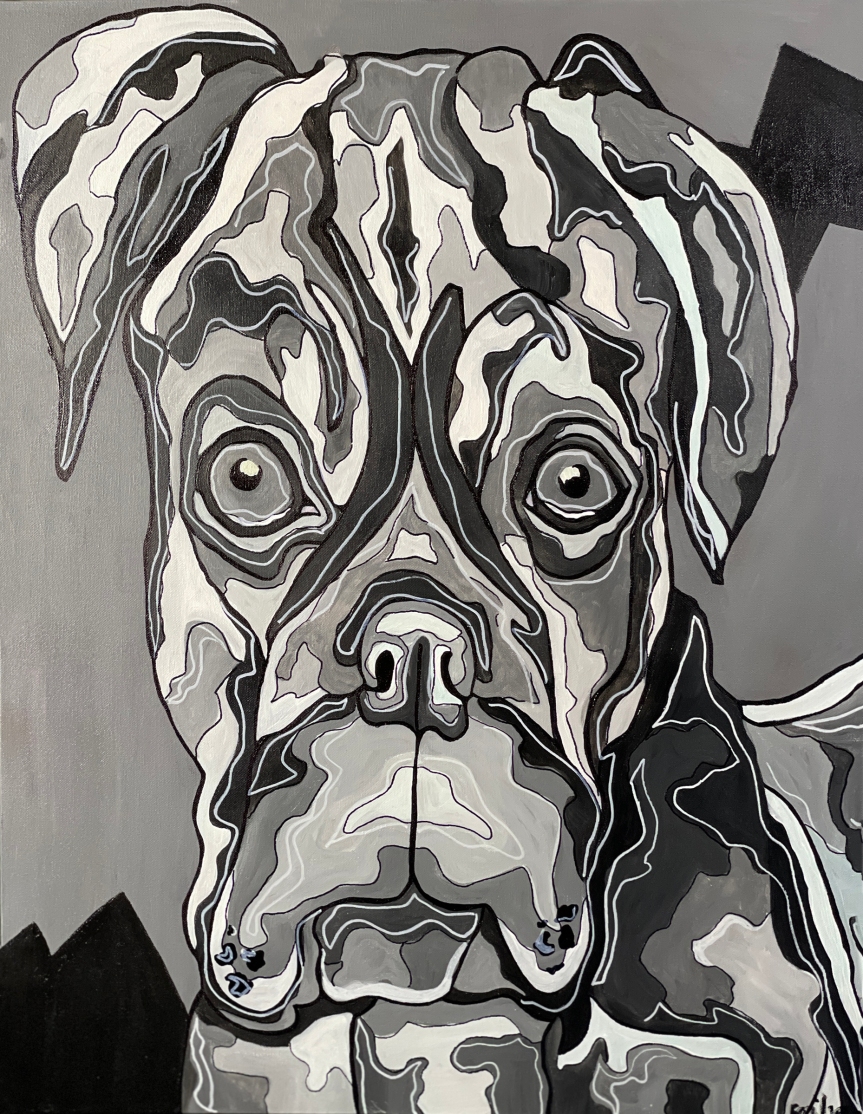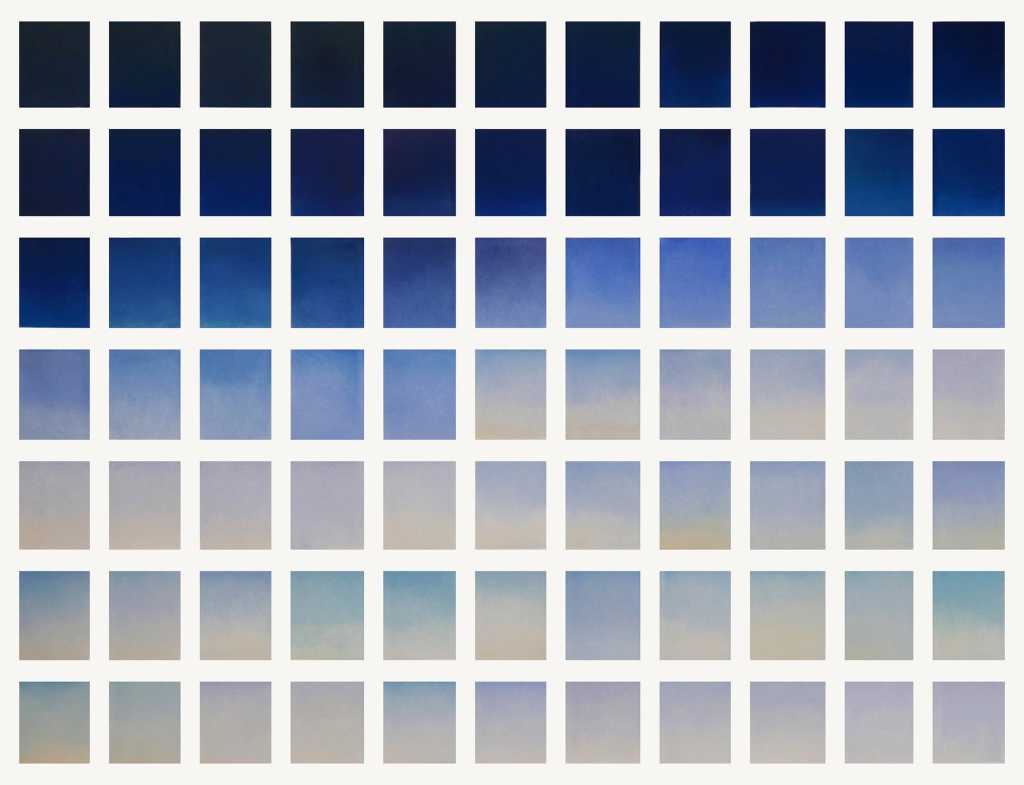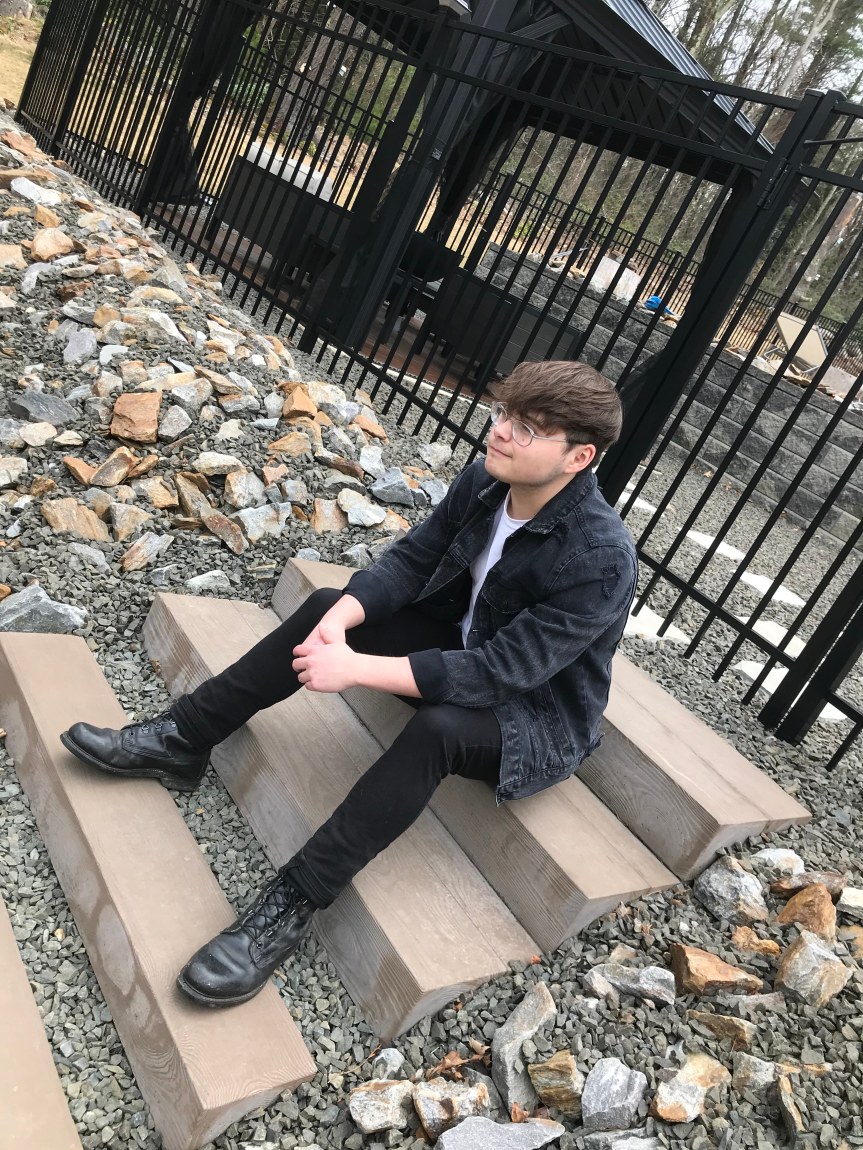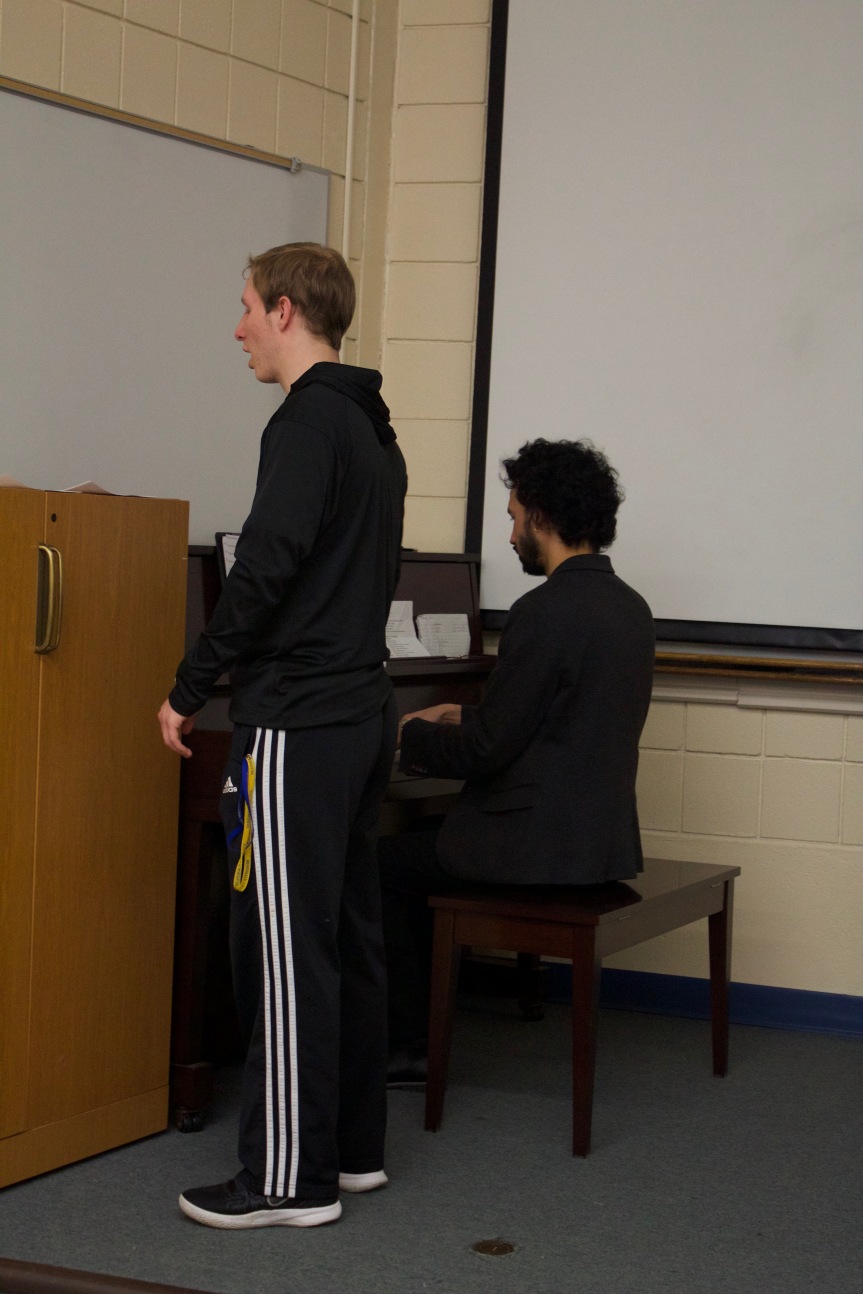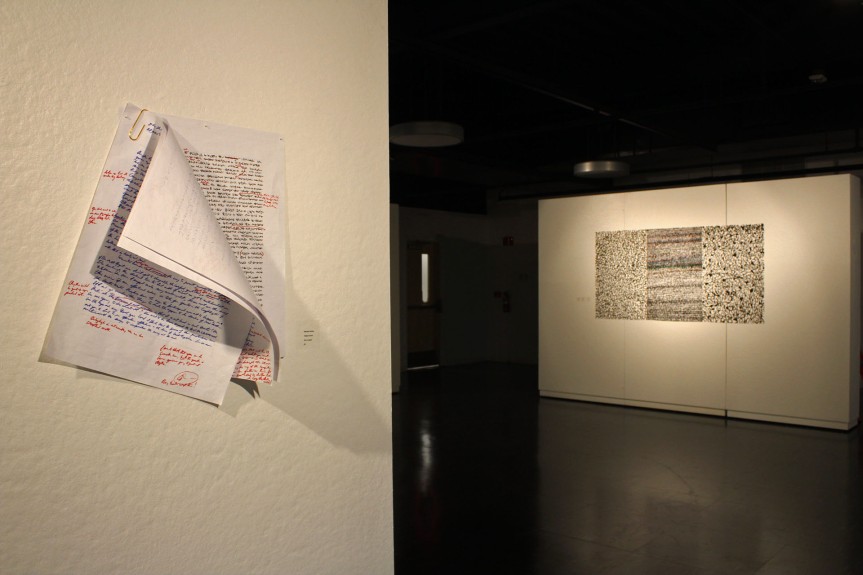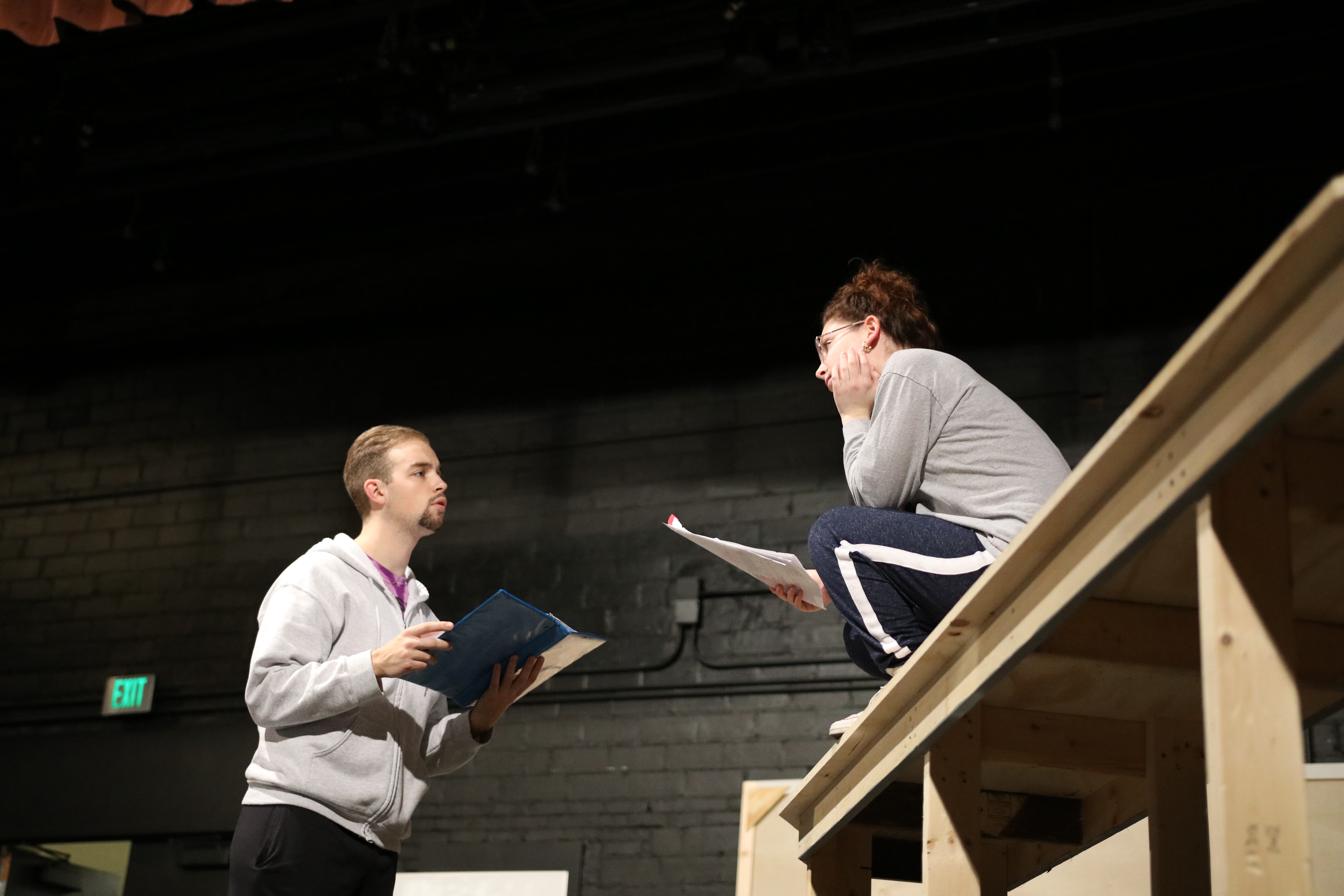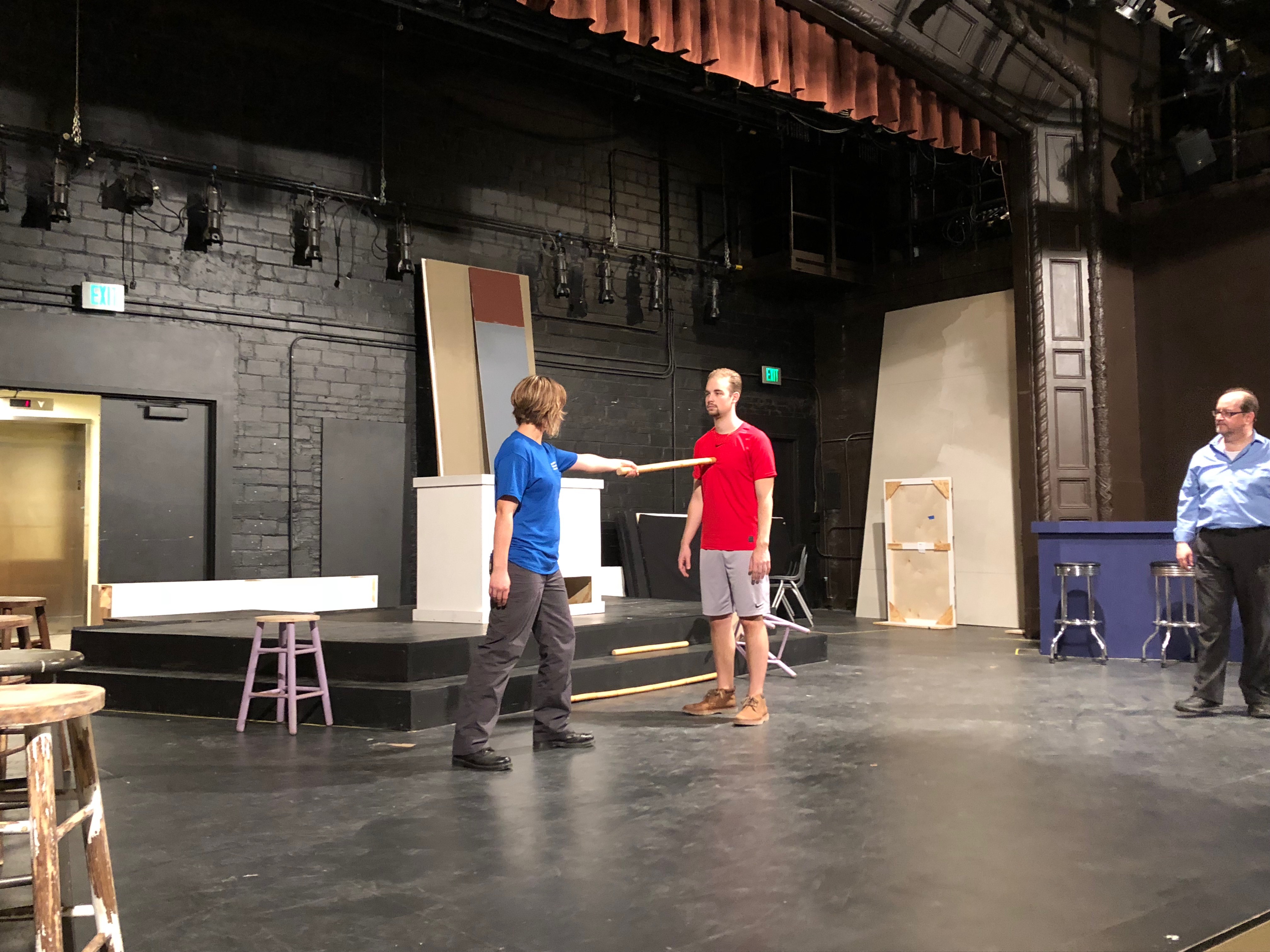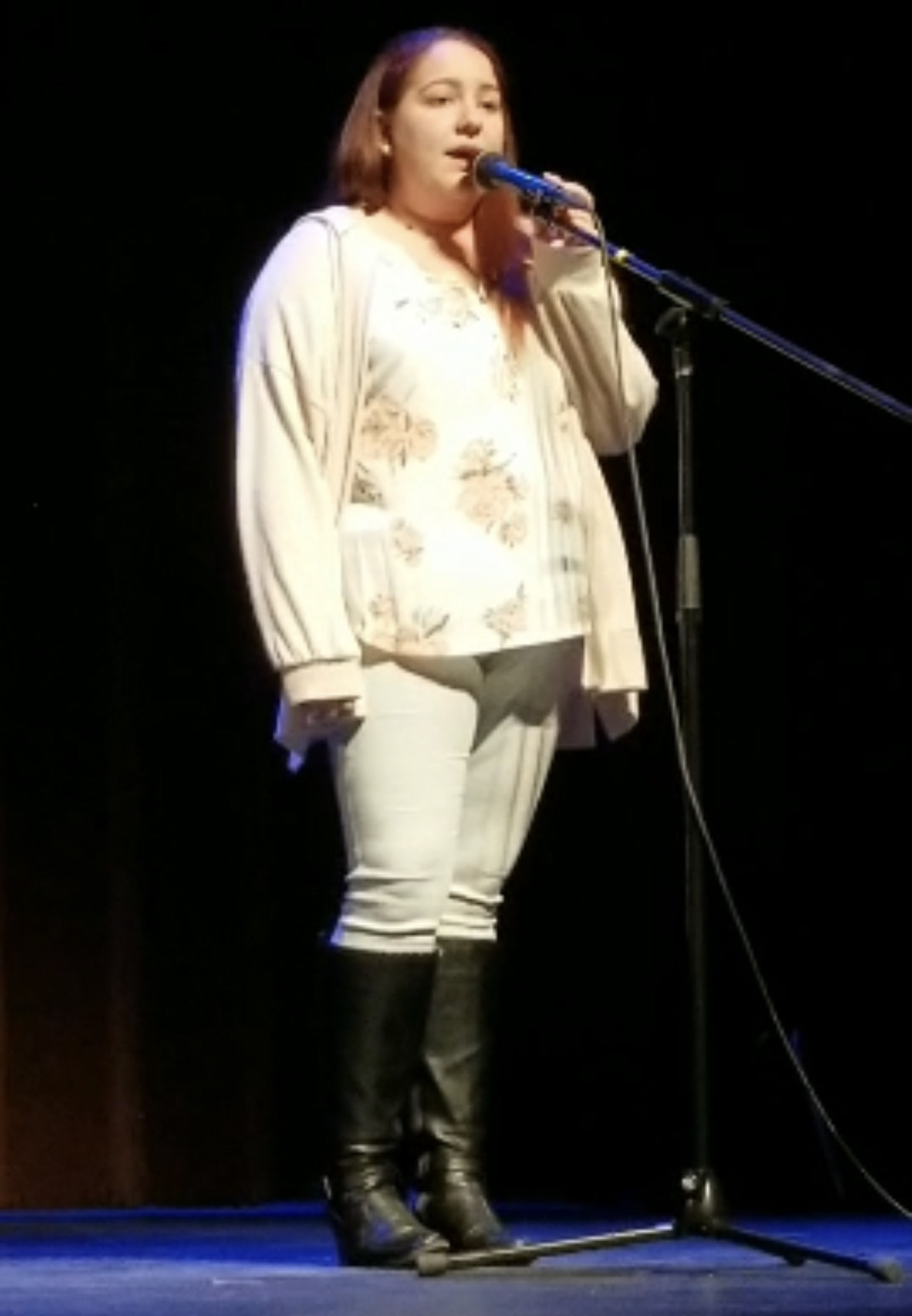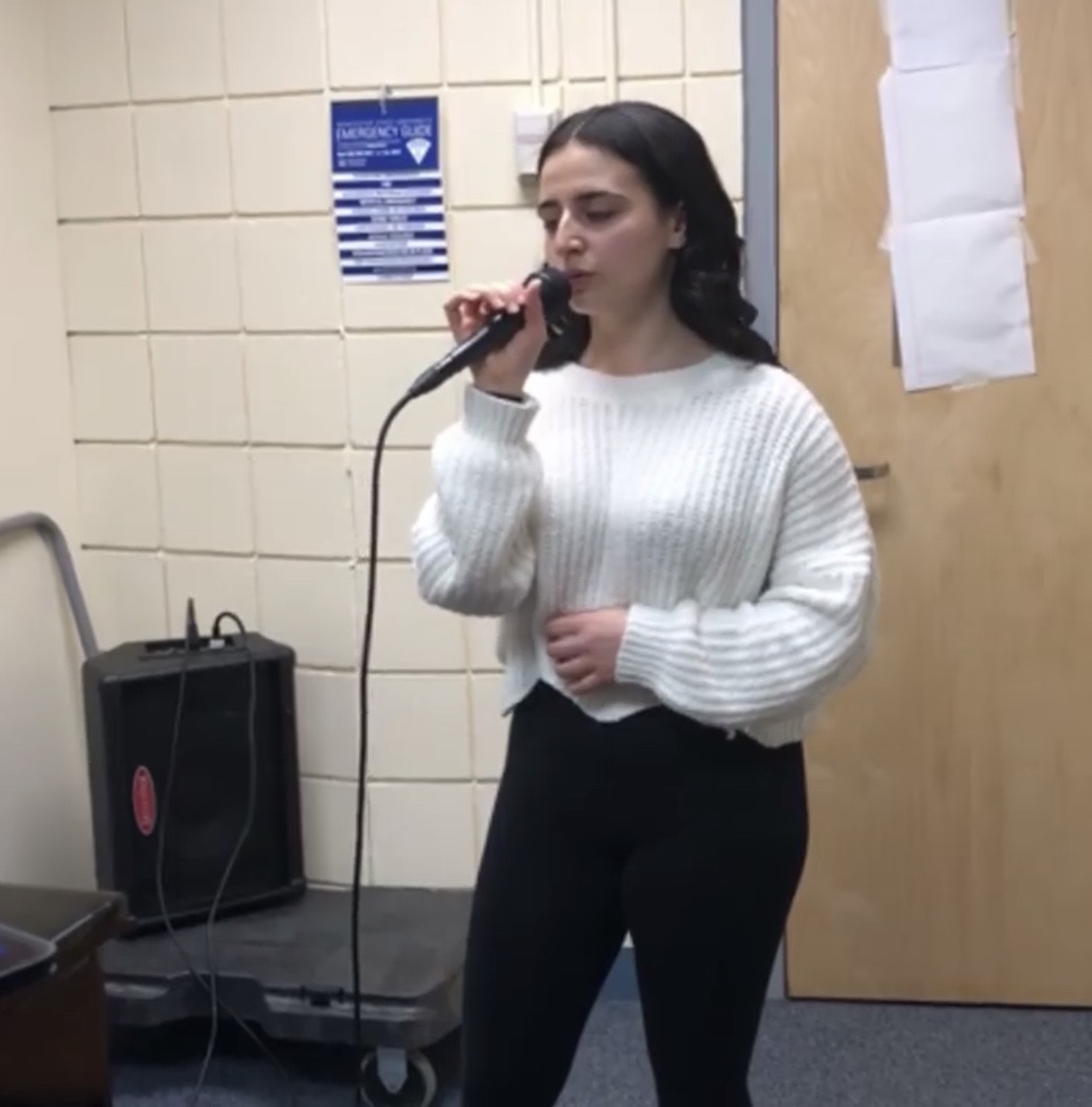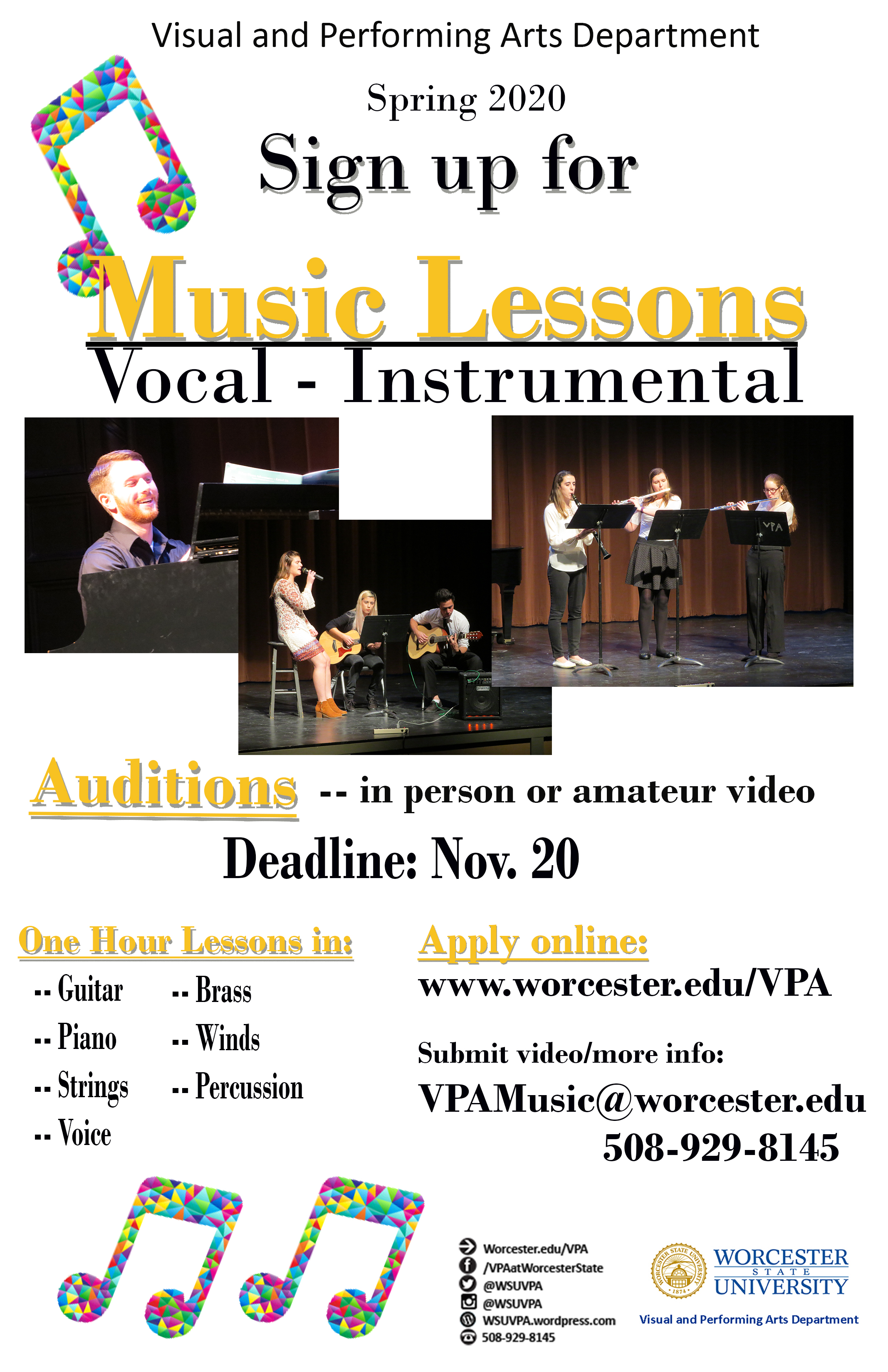Featured artwork, “The Bad Boxer,” is by Emily Cawley
Story is by VPA communications Intern Karen Shalev
Every spring, a group of Visual and Performing Arts (VPA) majors in their senior year complete their capstone project. The seniors create a work that summarizes their artistic experience at Worcester State and prepares them for the beginning of their journey as artists outside of college.
I am enrolled in the capstone course this semester, being allowed to take it a bit early, and was mesmerized by what my fellow classmates planned for their projects. Each project is unique to the individual, highlighting their strengths and encouraging them to work on their weaknesses.
During our weekly Friday classes, our professor Dr. Carlos Odria conducts check-ins to see how our projects are progressing. The creation side of art is not something that an audience typically gets to see.
It is my goal as one of the VPA interns this semester to show you the art creation process being undertaken by some of this year’s capstone students.
The students participating in this blog post are Emily Cawley, Tori Ferne, Mercedes Trudeau, Sam Lalos, and myself, Karen Shalev. Together, the five of us encompass a wide array of interests and focuses within the visual and performing arts.
Question: What is your major and focus in the VPA department?
Tori: VPA and Psychology double major with focuses in the theatre, visual arts, and music
Emily: VPA major concentrating in visual art with a focus in acrylic painting
Mercedes: VPA major with a focus in music
Sam: VPA major with a focus in art
Karen: VPA and Communication double major with a focus in theatre
Question: What are just a few examples of some of your favorite VPA courses?
Tori: The classes that I have really enjoyed have been Critical Thinking in the Arts and Interdisciplinary Arts Practice. I especially enjoyed Interdisciplinary Arts Practice because it helped get me on track to developing some of my ideas for my capstone and refining the type of performance that I am interested in.
Emily: Life Studio, Painting, 3D Sculpture
Mercedes: Women in Music, Chorus, and Watercolor are some of my favorites.
Sam: I really enjoyed some of the courses I took with Sam O’Connell in my first few semesters.
Karen: I have really enjoyed my practicum courses with Kyle Martin, interdisciplinary courses with Sam O’Connell, and my acting classes with Rachel Wiese and Kim Carrell.
Question: What is your capstone project?
Tori: My capstone will be a theatre and dance performance set to my original music. The concept for the project is based on a joint project with another senior, Michelle Solano. Michelle’s focus is visual art and her topic will be emotional abuse, with three pieces to be displayed in the virtual gallery. My topic is healing from trauma. The production will be a performance set to three original pieces that tell the story of this kind of emotional transformation.
Emily: My capstone is a series of acrylic dog portraits that will represent a concept known as breed discrimination through a play on colors and narrative. Breed Discrimiation occurs when laws and regulations are set forth to prevent the ownership (or make ownership more difficult) of certain dog breeds deemed ‘aggressive’ such as Pitbulls, Boxers, Doberman Pinschers, etc. These paintings will put into perspective how unjust and detrimental discrimination can be for certain dogs.
Mercedes: My capstone is a research project that looks at the connection between music and dementia/ Alzheimer’s Disease. I want to look at how music helps patients who suffer from this disease.
Sam: My capstone is called Serendipity 3 and will be a summary of everything I have done throughout my time at Worcester State. It will also tie into the Master’s in Theology I will be pursuing upon completion of this degree.
Karen: My capstone project involves developing a stage management manual specific to the VPA and theatre departments to provide a starting point for future stage managers. At the same time, I am stage managing the Spring 2021 devised production, “Dancing with Demons, which will provide ongoing hands-on experience to aid the development of my manual.
Question: What led you to this decision for your project?
Tori: Michelle’s project and my project are both inspired by our own personal experiences. My capstone performance will also draw from my coursework in psychology. We made this decision together and are looking forward to presenting our individual projects as well as our joint presentation in video format.
Emily: As a graduate in Animal Science from Becker College, where I was first introduced to the concept of Breed Discrimination, I knew I wanted to synthesize my interests in both art and animals for my thesis project. I also want to use my art to shed light on a topic that is largely ignored and I hope to shift my audiences’ perspective on how they view certain breeds.
Mercedes: My great grandmother passed due to complications from Alzheimer’s Disease and I would have given anything to have more time with her. I have decided that I want to work with the elderly and bring joy to them through music.
Sam: I am doing this because it is a required element of the degree, but I also look forward to summarizing everything I have done during my time at Worcester State.
Karen: Fall 2020 was my first experience stage managing with the virtual production of “Oedipus the King.” Stage managing is a fulfilling position, but also a difficult one. I spent hours researching online to understand what was expected of me as a stage manager. I am writing the manual that I would have wanted to have as a first time stage manager.
Question: Who are you working with as your mentor? How did you choose them as your mentor?
Tori: I am working with Kyle Martin as my mentor, who is one of the faculty in the VPA department who teaches music courses. I chose to work with Professor Martin to create the music pieces based on a previous directed study in composition during the past fall semester.
Emily: I am working with Michael Hachey as my mentor. As a respected professor in 2-D design at WSU, I felt he would be an asset to helping me convey my message in a way that plays with viewer’s emotions through color and composition.
Mercedes: Professor Christie Nigro is my mentor. I have taken chorus with her since I was a freshman and she is my advisor so she has seen me grow the most as a student so I thought she would be the perfect fit.
Sam: I am working with Michael Hachey. We’re about the same age. I knew him when I first started taking courses at the Worcester Art Museum many moons ago. He was my first teacher. Michael chose me, I didn’t choose him, but given the choice, I would have chosen him.
Karen: I am working with Adam Zahler, the chair of VPA and the director of the productions I have stage managed. This was a natural decision for me as I am working closely with Adam on this semester’s production.
Question: What steps have you already taken for this project?*
Tori: The first musical piece that I’m working on with Professor Martin was started as an assignment last semester. We’ve been continuing to work on it this semester and are beginning to work on the next two now. Professor Martin and I have been having conversations about how to express the emotional experiences through music and composition. A big piece of getting started was finalizing the concept with Michelle, which sparked the inspiration for the music.
Emily: I have completed a majority of my paintings already.
Mercedes: I have created my website to track my progress and have started to do a little research.
Sam: I have already dug out my subject matter and other paintings that I started that I can use for this project.
Karen: The most important step of the manual I am creating is determining what information should be included in it. I have begun a comprehensive outline of what information I want to include, as well as outcomes for the person who reads it. I have created templates of stage management paperwork to include in the manual. I also keep an ongoing journal of discoveries as I stage manage this semester so I can add in as much information as possible.
Question: What steps will you have to take during this semester to complete this project?*
Tori: This semester I need to finish the music pieces to begin working. I’m interested in studying theories of psychology in relation to movement. Becoming a certified dance movement therapist is one of my career goals, so I would like to incorporate the field of movement as a healing practice. Once the music pieces are ready, I will be choreographing an expressive dance performance. This process will involve studying different forms of dance independently. In order to present the project, there will be considerations for the staging, lighting, and costumes as well.
Emily: I have to finish one more portrait and then go back and do some fine tuning on pieces that are already completed. I also have to write a narrative to correspond to both the aggressive and non-aggressive dog groups. By doing so I hope I can further convey my message that depending on the breed, dogs have very different experiences in this world – especially when it comes to getting adopted.
Mercedes: I will gather more data as I go along and I plan to write a song to go along with it, which will consist of me sitting at the piano and seeing what works for me and what doesn’t.
Sam: I need to do some experimenting with seeing what type of markers I will use. I have sharies, but I also have watercolor and acrylic markers. I need to see how they smudge to determine which ones I will use.
Karen: This semester will contain two major projects that I need to complete: stage managing and writing up the manual. The steps that I take to stage manage the devised production are difficult to predict in advance because this production allows our actors to create the show as we go. There are basic elements I know I will need to do that will tie into the creation of my manual, such as documenting blocking and creating a calling script. The actual manual will need to be written this semester.
Question: What challenges do you see yourself overcoming with this project?
Tori: Some of the greatest challenges I anticipate in this project will revolve around the timing to complete these goals. There are also challenges with the choreography and theatrical portion in terms of filling the time for the production with an engaging performance. And once it comes time to present the project, there will be technical components that will need to be coordinated and finalized. Once the performance is filmed, I will also need to edit the video to present it.
Mercedes: I have never really written my own music before, but I feel this will be a great time to do it as this project is about being creative and expressing my thoughts and findings.
Sam: I have this wonderful new rug in my apartment, I’ve lived here almost a year, and I’m petrified of getting acrylic paint on the floor. I am taking precautions but I am very limited in what I can do. I can’t do nice, big, expansive paintings that are 2ft x 3ft.
Karen: This project will challenge my organizational and time management skills like few other projects I have completed at WSU so far. I will also have my writing skills challenged as I find the best way to communicate the stage management experience to my intended audience.
Question: How will this prepare you for life as an artist after graduation?
Tori: After graduation I would like to pursue an MFA in interdisciplinary arts and performance. I believe that this capstone project will highlight my skills and interests. It will be a big step for me to create a production from the ground up that incorporates my broad interests in performance.
Emily: This project has allowed me to use my art not simply for enjoyment but to challenge a topic that is near and dear to my heart. After graduation I hope that I can continue to make art that will force people to think about the world around them and inspire them to change their perspective or even the world around them.
Mercedes: After doing my research I hope to understand more of the science behind why our musical memory is not affected by dementia and how it can help patients who suffer from it. This knowledge will help me when I begin working with the elderly and bringing music to them.
Sam: I’ve been doing this kind of thing my whole life. I have keratoconus and was forced to spend a lot of time by myself and do things differently than other people. In my old age, my parents left me something after they died. My father owned a machine shop and he had a dozen employees. When I was younger, I was a rock musician. When I started college, I studied engineering for 3 years. Then, faced with blindness, I wanted to be able to make things out in my mind’s eye inside my own head if I went totally blind, which is always a possibility in my case.
Karen: I begin the accelerated Master’s of Science in Communication at Clark University in the fall, which allows me to take graduate courses as I finish up my senior year at Worcester State thanks to the joint articulation program between the two universities. My future goal is to work in public relations and this project will strengthen the important skills of communication, organization, and time management necessary. It also challenges me to create art in my own way as the person behind the scenes who ensures that the other artists can create the best they can.
Question: How has your creative process adjusted during COVID?
Tori: When I was taking Interdisciplinary Arts Practice, I was able to perform a performance piece live for my classmates. That was a really special experience, and I believe that live performance has a special quality that cannot be replicated through video medium. Because of COVID restrictions, this performance will have to be filmed and released online. There are some good things that come with that, like the ability to have a lasting documentation of the project. However, the process will be different in terms of the technical aspect of putting this together.
Emily: I was planning on this project being a completely immersive experience – playing with lighting in the gallery and perhaps adding music. However, due to COVID restrictions and no in-person viewings, I have decided to add a narrative (which was not part of my original plan) to ensure that my message is clear without the need for other stimuli.
Mercedes: I don’t think I would be writing a song if it were for COVID as I wouldn’t want to perform live, but I feel better about doing a recording since we will have to present virtually.
Karen: Due to online restrictions, I have not yet had the personal experience of stage managing a show traditionally. This comes with advantages, such as learning how to communicate effectively online, but this is something that I will need to work with my mentor to overcome for the manual so it can be as robust as possible.
Question: How can readers support you during this process?
Tori: Please keep up with the seniors’ projects through this blog and other releases from the department. I’m excited to be a part of this cohort for the capstone even though we are all adjusting to a unique situation this semester. I wish that I could put together a small live performance for this project, but I hope that people will get to experience the production through online platforms.
Emily: Though I personally do not need extra support at this time, our local shelters do! Though COVID-19 adds an added challenge, many shelters may still need volunteers and donations. Get to know a breed that is labeled as “aggressive” by society and see for yourself how amazing these animals truly can be.
Sam: You can support me by listening to me and trying to understand what i’m saying, just like I have to listen to my professors and what they’re saying.
Karen: See as many shows as you can, whether they are online or in-person with safety precautions. The cast and crew work long hours and dedicate themselves entirely to the production.
Question: Is there anything else you would like to add?
Sam: My quest is not to get a high ed degree, a Ph.D., or anything like that. It’s to get three Bachelors. I have one in science, one in the humanities, and now I’ll have one in the arts. In all three, I’m magna cum laude, so I’m trying my best. It’s like being in kindergarten actually, like Schwarzenegger’s film there. It’s rewarding, humiliating at times, but very rewarding in the end.
* An editorial note: Interviews were conducted and completed by March 2021 to capture students’ creative approaches to developing their capstone concepts.
